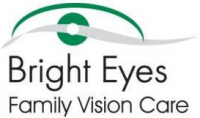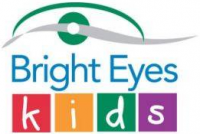Our Frequently Asked Questions contain common questions we receive relating to Binocular Vision Dysfunction.
How Do You Know If You Have Binocular Vision Dysfunction?
Headaches and dizziness are the two most common symptoms associated with BVD. Patients with BVD tend to experience headaches in the front of the face or the temples. The dizziness is often described as feeling disoriented or lightheaded.
Other symptoms often accompany headaches and dizziness, including pain, difficulties with balance and coordination, reading, vision, and psychological symptoms.
- Pain Symptoms: Such as face ache, eye pain, or pain with eye movement (symptoms similar to sinus problems, migraines, TMJ problems); neck ache and upper back pain due to a head tilt (similar to spinal misalignment symptoms).
- Balance and Coordination Symptoms: Motion sickness, nausea, poor depth perception, unsteadiness while walking or drifting to one side while walking (“I’ve always been clumsy”), lack of coordination with symptoms being similar to those seen in patients with MS, patients who have experienced a stroke, an inner ear disorder, or Meniere’s Disease.
- Reading Symptoms: Difficulty with concentration (symptoms are similar to those experienced with ADHD), difficulty with reading and comprehension, skipping lines while reading, losing one’s place while reading, and words running together while reading (symptoms similar to those seen with a learning disability or dyslexia).
- Vision Symptoms: Blurred vision, double or overlapping vision, shadowed vision (symptoms similar to those seen in patients with MS), light sensitivity, difficulty with glare or reflection
- Psychological Symptoms: Feeling overwhelmed or anxious when in large contained spaces like malls or big box stores like Walmart, feeling overwhelmed or anxious in crowds or while driving (symptoms similar to those seen in patients with anxiety or agoraphobia or panic attacks).
If you have seen your primary care doctor or specialist and there has been no cause found for your symptoms, it could be BVD.
How Do You Fix Binocular Vision Dysfunction?
Binocular Vision Dysfunction (BVD) is a serious eye condition where the eyes are misaligned, sending two different images to the brain. The brain struggles and overuses the eye muscles to merge these two different images into one clear image, causing symptoms such as headaches, dizziness, anxiety, motion sickness, and chronic neck pain.
BVD is treated by correcting eye misalignment with our specialized microprism lenses. They bend light in such a way that the misaligned images are once again realigned. Once this occurs, the eye muscles no longer have to strain, providing significant relief from headaches, dizziness, blurred vision, and all other symptoms.
Patients oftentimes report feeling noticeably better immediately. The average patient suffering from BVD will notice a 50% reduction of symptoms by the end of their first visit. Over the next several visits, the prism lenses are fine-tuned and continue to improve and eliminate the symptoms of BVD.
Can Binocular Vision Dysfunction Make it Difficult to Drive?
Yes, many patients with BVD experience difficulty with driving. This is because two common symptoms associated with the condition are dizziness and difficulty with depth perception, which alters your balance and equilibrium, making it difficult to see the road, signage, and nearby cars. Driving at night and anxiety while driving are also common symptoms for BVD patients.
How Do You Get BVD?
BVD can be the result of your facial asymmetry (where one eye is higher than the other), nerve or eye muscle abnormality (a common condition many people are born with), or it can develop as a result of stroke, concussion / brain injury, or a similar neurological disorder.
How Is BVD Diagnosed?
To determine if your symptoms are the result of Binocular Vision Dysfunction, we suggest you first see your primary care physician or specialist to rule out other causes for your symptoms. If no cause is found for the symptoms, then BVD might be the issue.
- We ask you to fill out a specialized questionnaire designed to help diagnose those who have BVD.
- You will be asked to complete a detailed Health History form.
- An eye exam is performed to determine the need for correction of nearsightedness, farsightedness, and astigmatism (a common imperfection in the eye’s curvature).
- A specialized exam is performed (NeuroVisual™ Evaluation) to determine if vision misalignment is present.
- If diagnosed with BVD, you will be fitted with a trial version of your new prescription during your exam. Most people notice a significant improvement in their symptoms within just a few minutes of putting on the trial lenses.
You can expect to spend approximately 3 hours in our office during your visit.
At What Age Can A Person Receive Treatment For BVD?
Every person can receive treatment for BVD, as long as they are old enough to wear the specialized prism glasses and be able to tell (or show) the doctor how they feel. The youngest patient that has been helped was 8 months old. There is no upper age limit.
Can People With Traumatic Brain Injury Be Helped?
Yes, but it is important that individuals with a traumatic brain injury be thoroughly evaluated by their doctor to rule out other causes of symptoms (including dizziness and headaches). If no other cause is found, Dr. Bonilla-Warford and Dr. Knighton can conduct a NeuroVisual™ Evaluation to determine if BVD is the cause of your symptoms. Even if you have experienced BVD symptoms for decades, you can still receive effective treatment for the condition.
Contact Us for More Info
Have questions? Please feel free to contact us with any additional questions you might have – We are more than happy to assist and provide you with the information you need. Call us at 813-358-0400 or email us: office@brighteyestampa.com.
If these symptoms sound familiar and you believe that you might have BVD, get relief now and take the BVDQ™, our Free 5 Minute Self Test to find out if you have BVD

